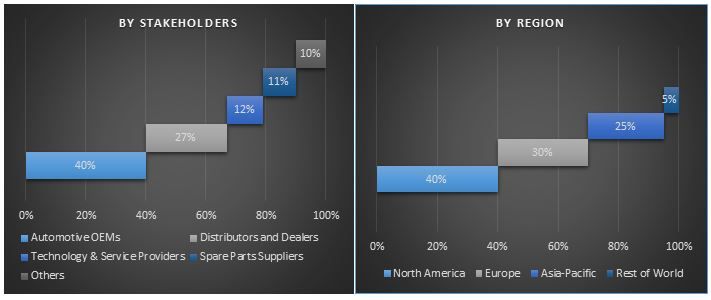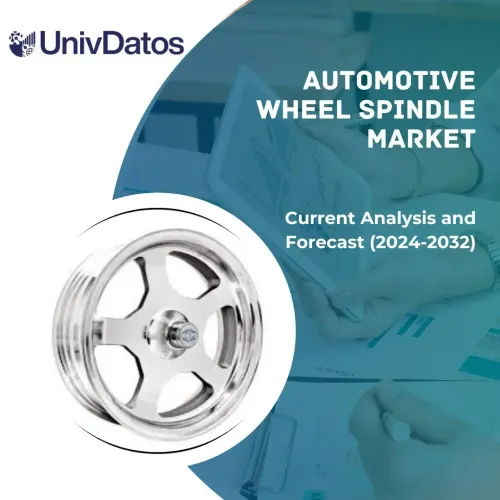複合材料は、2つの材料を合成的に組み合わせることによって調製される均一な混合物です。そのうちの1つは繊維であり、補強材であり、もう1つはマトリックスと呼ばれる結合材です。複合材料は、高い電気的および耐食性、剛性、および高い強度重量比を備えています。自動車における複合材料の使用は、車両全体の重量を減らし、燃費を改善し、温室効果ガス排出量を削減し、安全性を向上させ、衝突安全性を高め、優れた空力設計によるスムーズな仕上がりを提供します。これらの利点に加えて、複合材料は、自動車業界で広く採用されているため、他の利点も提供します。さらに、車両による温室効果ガス排出量に対する懸念の高まりと、それに関する規制枠組みも、自動車業界における複合材料の使用を推進しています。立法機関は規制を発行するだけでなく、グリーンカーの所有者にある程度の緩和と補助金を提供しています。さらに、電気自動車向けの複合材料の需要が目に見えて増加しています。複合材料は、バッテリーを使用して増加した重量を相殺するためにEVで使用されています。このため、自動車OEMのモデルにおける複合材料の使用に対する傾向も急上昇しています。その後、OEMは複合材料メーカーおよび販売業者との競争戦略を開始し、業界での足場を強化しています。上記のため、世界の自動車用複合材料市場は2024年までに81億7000万ドルに達すると予測されています。ただし、成長する自動車複合材料市場は、複合材料の高い製造コストや、新興国における製造技術の進歩の欠如など、特定の市場の課題に直面しています。それにもかかわらず、ハイブリッド複合材料の人気が高まっていること、自動車OEMと材料サプライヤーの関係が深まっていること、および発展途上国での成長の余地が、この市場における主要な機会分野と考えられています。
レポートで提示されるインサイト:
- 世界の自動車複合材料市場は、ポリマーマトリックス複合材料(PMC)、金属マトリックス複合材料(MMC)、セラミックマトリックス複合材料(CMC)、ハイブリッド複合材料などのさまざまな材料に基づいてセグメント化されています。現在、PMCは、高い柔軟性、高い断熱性、他の複合材料タイプよりも低い密度と軽量性を備えているため、自動車メーカーの間で最も人気のある複合材料タイプです。
- 世界の自動車複合材料市場は、複合材料のさまざまな製造プロセスに基づいてさらにセグメント化されています。これには、ハンドレイアップ、圧縮成形、射出成形、および樹脂トランスファー成形(RTM)が含まれます。射出成形は、2017年に19億8000万ドルの市場価値で市場を支配しました。。
- さまざまな用途分野に基づいて、世界の自動車用複合材料市場は、インテリア、エクステリア、シャーシ、パワートレイン&アンダーザフード、および構造にセグメント化されています。さまざまな用途分野の中で、エクステリアセグメントが市場を支配しましたが、車両の室内空気品質に関する厳しい規制のため、予測期間中に車両インテリア向けの複合材料の需要が活発になると予想されます。
- 世界の自動車用複合材料市場は、パフォーマンスカー、乗用車など、さまざまな車両タイプに基づいてさらにセグメント化されています。乗用車セグメントは、2017年に自動車複合材料市場を支配し、予測期間中に市場を支配すると予想されます。車両セグメントの中で乗用車の最高の市場価値は、軽量車両における複合材料の採用の増加に起因しています。
- 世界の自動車用複合材料市場の市場浸透度をよりよく理解するために、業界は、北米(米国、カナダ、メキシコ、および北米のその他の地域)、ヨーロッパ(ドイツ、フランス、英国、ロシア、イタリア、スペイン、およびヨーロッパのその他の地域)、アジア太平洋地域(中国、日本、インド、韓国、シンガポール、オーストラリア、およびアジア太平洋地域のその他の地域)、中東およびアフリカ(アラブ首長国連邦、サウジアラビア、アルジェリア、クウェート、エジプト、カタール、および中東およびアフリカのその他の地域)、およびラテンアメリカ(ブラジル、アルゼンチン、チリ、およびラテンアメリカのその他の地域)を含む地理的および国に基づいて分析されています。中国、日本、インドなどの国々における複数の複合材料メーカーの強力な存在のため。アジア太平洋地域が最高の市場シェアを占め、2017年には21億6000万ドルと評価されました。さらに、北米とヨーロッパにおける温室効果ガス排出量に関する厳しい規則と規制は、両地域での自動車複合材料市場を促進すると予想されます。
複合材料市場の主要企業
この調査でプロファイルされている主要企業は、BASF SE、DowDupont Inc.、Gurit Holding AG、Magna International Inc.、三菱ケミカルホールディングス株式会社、Owens Corning、SGL Group、Solvay SA、Teijin Limited、およびToray Industries Inc.です。これらの業界プレーヤーは、車両にコスト効率の高い複合材料を導入するために、自動車OEMと提携しています。一部の主要プレーヤーは、新しいプラントを設立したり、R&Dへの支出を増やして、より安価な製造方法を開発したりすることにより、事業を拡大しています。
レポートを購入する理由:
- この調査には、認証された主要な業界専門家によって検証された市場規模と予測分析が含まれています
- レポートは、業界全体のパフォーマンスの概要をすばやく確認できます
- このレポートでは、主要なビジネス財務、製品ポートフォリオ、拡張戦略、および最近の動向に重点を置いて、著名な業界関係者の詳細な分析をカバーしています
- 業界で蔓延しているドライバー、抑制、主要なトレンド、および機会の詳細な調査。
- ポーターのファイブフォース分析を利用した業界の魅力の評価
- この調査では、さまざまなセグメントにわたる市場を包括的にカバーしています
- 業界の詳細な地域レベル分析
カスタマイズオプション:
The世界の自動車複合材料市場は、地域/国レベルまたはその他の市場セグメントにカスタマイズできます。これに加えて、UMIは、お客様が独自のビジネスニーズを持っている可能性があることを理解しているため、お客様に完全にカスタマイズされたソリューションも提供しています。
目次
世界の自動車用複合材料の全体的な採用率を作成および分析する際に考慮された3つの主要なステップは、過去の市場の分析、現在の市場の見積もり、および将来の市場の予測でした。技術の過去の市場と現在の市場の全体的な見積もりを収集するために、包括的な二次調査が行われました。次に、これらのインサイトを検証するために、多数の調査結果と仮定が考慮されました。さらに、世界の自動車複合材料市場のバリューチェーン全体にわたる業界専門家との包括的な一次インタビューが実施されました。すべての仮定、市場規模の決定、一次インタビューによる市場数値の検証の後、トップダウンアプローチを採用して、世界の自動車複合材料市場の完全な市場規模を予測しました。その後、市場の細分化とデータの三角測量方法を採用して、テクノロジーのセグメントとサブセグメントの市場規模を推定および分析しました。詳細な方法論を以下に説明します。
過去の市場規模の分析
ステップ1:二次情報源の詳細な調査:
過去の市場規模を取得するために、詳細な二次調査が実施されました。世界の自動車用複合材料市場は、以下のような企業の内部情報源を通じて行われました。年次報告書と財務諸表、業績発表、プレスリリース、在庫記録、売上高などおよび以下を含む外部ソース業界誌、ニュース記事、政府発行物、国際自動車工業会、競合他社の発行物、セクターレポート、規制機関の発行物、安全基準機関、サードパーティデータベース、その他の信用できる出版物。
ステップ2:市場セグメンテーション:
市場全体の過去の市場規模を取得した後、世界の自動車用複合材料市場のさまざまなセグメントとサブセグメントの過去の市場インサイトとシェアを収集するために、詳細な二次分析が行われました。レポートに含まれる主なセグメントは、材料タイプ、製造プロセス、用途、および車両タイプです。
ステップ3:要因分析:
さまざまなセグメントとサブセグメントの過去の市場規模を取得した後、世界の自動車用複合材料市場の現在の市場規模を推定するために、詳細な要因分析が実施されました。要因分析は、購買力、政府の取り組み、主要地域/国における政府規制などの従属変数と独立変数を使用して実施されました。自動車用複合材料の過去のトレンドと、最近の市場規模とシェアへの年々年の影響が分析されました。需要と供給側のシナリオも徹底的に調査されました。
現在の市場規模の見積もりと予測
現在の市場規模の決定:上記の3つのステップからの実用的なインサイトに基づいて、現在の市場規模、市場の主要プレーヤー、これらのプレーヤーの市場シェア、業界のサプライチェーン、および業界のバリューチェーンに到達しました。必要なすべての割合シェア、分割、および市場の内訳は、上記の二次アプローチを使用して決定され、一次インタビューを通じて検証されました。
推定と予測:市場の推定と予測のために、市場で利用可能なドライバー、抑制、トレンド、および機会を含むさまざまな要因に重みが割り当てられました。これらの要因を分析した後、関連する予測手法、つまりボトムアップ/トップダウンを適用して、世界の主要地域/国におけるさまざまなセグメントとサブセグメントについて2024年までの市場予測に到達しました。市場規模を推定するために採用された調査方法論は次のとおりです。
- 世界の主要地域/国における市場規模(米ドル)と自動車複合材料の採用率。
- 市場セグメントとサブセグメントのすべての割合シェア、分割、および内訳
- さまざまなテクノロジーと市場における主要プレーヤー、および各プレーヤーの市場シェア。また、急成長する世界の自動車用複合材料市場において、これらのプレーヤーが競争するために採用している成長戦略
市場規模とシェアの検証
一次調査: トップレベルエグゼクティブ(CXO/VP、販売責任者、マーケティング責任者、運用責任者、地域責任者など)を含む主要オピニオンリーダー(KOL)に対して、詳細なインタビューが実施されました。一次調査の結果が要約され、統計分析が実施されて、述べられた仮説が証明されました。一次調査からのインプットは二次調査の結果と統合され、情報を実行可能なインサイトに変換しました。
分割一次参加者数
マーケットエンジニアリング
全体的な市場エンジニアリングプロセスを完了し、世界の自動車用複合材料市場に関連する各セグメントおよびサブセグメントの正確な統計数値を導き出すために、データ三角測量技術が採用されました。データは、材料タイプ、製造プロセス、用途、および車両タイプの分野におけるさまざまなパラメータとトレンドを調査した後、いくつかのセグメントとサブセグメントに分割されました。
主な世界の自動車用複合材料市場調査の目的
この調査では、世界の自動車用複合材料市場の現在および将来の市場トレンドが特定されています。投資家は、この調査で実行された定性的および定量的分析から、投資に対する裁量権を決定するための戦略的洞察を得ることができます。現在および将来の市場トレンドは、市場の全体的な魅力を決定し、業界参加者が未開拓市場を最大限に活用して、最初の参入者の優位性を享受するためのプラットフォームを提供します。調査の他の定量的な目標には、以下が含まれます。
- 価値(米ドル)で、世界の自動車用複合材料の現在および予測市場規模を分析する
- 世界の自動車用複合材料市場のさまざまなセグメントとサブセグメントの現在および予測市場規模を分析する。調査のセグメントには、材料タイプ、製造プロセス、用途、および車両タイプが含まれます
- 自動車用複合材料で使用されるテクノロジーとプロトコルを定義および説明する
- 顧客および競合他社の分析などとともに、テクノロジーに関連する潜在的なリスクを予測する
- 世界中の主要地域/国における自動車用複合材料に関する政府規制を定義および分析する
- 北米、ヨーロッパ、アジア太平洋、MENA、およびラテンアメリカを含む地域について、価値ベースで、自動車用複合材料の現在および予測市場規模を分析する
- 世界の自動車用複合材料の競争環境と、市場プレーヤーが成長し続ける市場で持続するために採用している成長戦略を定義および分析する
関連 レポート
この商品を購入したお客様はこれも購入しました











